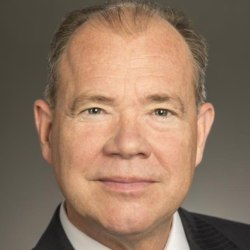High Speed Rail Is ‘On Track’ to Incur Billions in Overruns
Editor’s Note: This article by Jon Coupal provides an update on what has to be one of the biggest con jobs ever perpetrated on California’s voters – “High Speed Rail” that will never make a profit, will never move significant numbers of people, will not even be “high speed” in many sections of track, cannot integrate with other rail assets (different track gauge), and is going to cost at least $50 billion more than they said it would. So why are we still doing this project? One significant reason is the political support it gets from organized labor. Rather than fight for projects that would actually improve the lives of millions of Californians, such as better roads, refurbished bridges, upgraded ports, new power stations, and sorely needed water infrastructure, California’s labor movement backs high speed rail. And the reason they do that is because they don’t want to fight the powerful environmentalist lobby. This is a failure of vision and it is a failure of courage. And it is difficult to overstate how much this fails the ordinary working families that organized labor purports to support above all else. Read on.
High-speed rail continues to be an expensive, sick joke for California. Under the current plan, it is no longer “high-speed” and projected costs, which seem to change almost daily, appear to be doubling.
In the latest news, the nascent California high-speed rail system is running $50 million over budget for a two mile stretch in Fresno.
Let that sink in for a moment.
$50 million, over budget, for just a two mile stretch.
Let’s see, HSR has a $50,000,000 cost over run on 2 miles of a 32 mile job. Does that mean we can expect total cost overrun of $25 million per mile times 32 miles or $800,000,000?
Better yet, let’s extrapolate that to the entire project. You know, the one sold to voters. According to High Speed Rail Authority itself, over 800 miles of track are needed. So, at $25 million of cost overruns per mile, that works out to $20,000,000,000. That’s $20 billion in cost overruns!
In just 3 years, from the original passage of Proposition 1A authorizing about $10 billion in High Speed Rail bonds, the estimated cost for high-speed rail had gone from $40 billion to $98 billion, the amount that independent expert analysis had predicted prior to the bond’s being approved.
Responding to public outrage, the High-Speed Rail Authority came up with a plan costing “only” $68 billion. The new “blended” system would combine high and low speed rail, doubling the travel times as well as ticket prices.
Fearing a voter revolt, the High-Speed Rail Authority rushed to break ground, hoping that once they dug a hole, the pet project of Gov. Brown and the majority of Sacramento lawmakers, who receive backing from construction contractors and labor unions that expect to be the primary beneficiaries of billions of dollars of public spending, would be safe from outside interference.
By beginning a first segment between Merced and Fresno, the rail authority engaged in the classic Willie Brown strategy. The former Assembly Speaker, in a moment of candor, once told the San Francisco Chronicle, “In the world of civic projects, the first budget is really just a down payment. If people knew the real cost from the start, nothing would ever be approved. The idea is to get going. Start digging a hole and make it so big, there’s no alternative to coming up with the money to fill it in.”
Constant cost overruns and a lack of accountability plague California’s infrastructure projects. Perhaps, as a public service, it should be required that Brown’s words be reprinted in every ballot summary for every construction bond placed before the voters.
Jon Coupal is president of the Howard Jarvis Taxpayers Association — California’s largest grass-roots taxpayer organization dedicated to the protection of Proposition 13 and the advancement of taxpayers’ rights.
